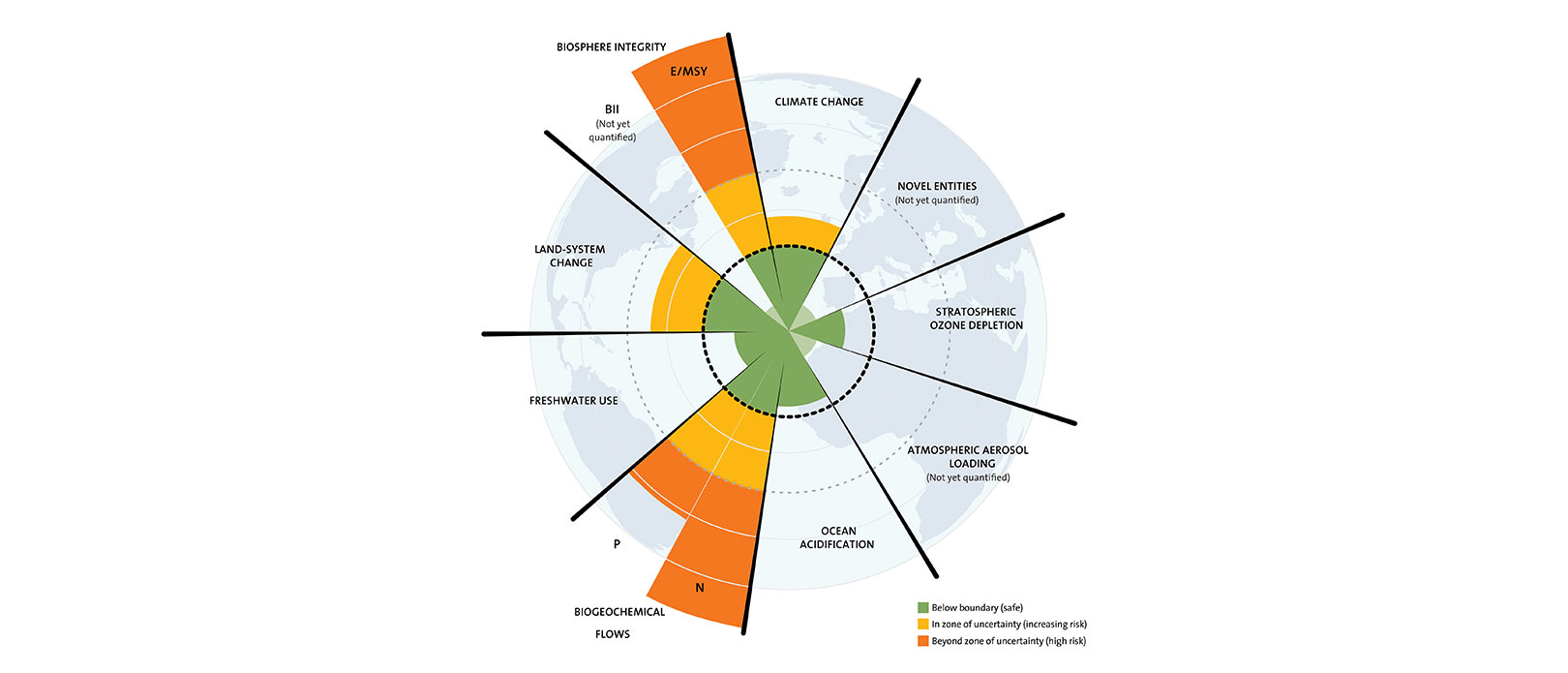The planetary boundaries concept presents a set of nine planetary boundaries within which humanity can continue to develop and thrive for generations to come
In 2009, former centre director Johan Rockström led a group of 28 internationally renowned scientists to identify the nine processes that regulate the stability and resilience of the Earth system. The scientists proposed quantitative planetary boundaries within which humanity can continue to develop and thrive for generations to come. Crossing these boundaries increases the risk of generating large-scale abrupt or irreversible environmental changes. Since then the planetary boundaries framework has generated enormous interest within science, policy, and practice.
Video below: Johan Rockström introduces the Planetary Boundaries framework at TED Global 2010.
https://www.youtube.com/embed/RgqtrlixYR4
Key publications
2009
Ecology & Society: Planetary Boundaries: Exploring the Safe Operating Space for Humanity
Nature: a special section and feature article published in Nature
2015
Most recent update of the framework, published in Science. It stated that society’s activities have pushed climate change, biodiversity loss, shifts in nutrient cycles (nitrogen and phosphorus), and land use beyond the boundaries into unprecedented territory.
Planetary boundaries: Guiding human development on a changing planet
Click here to access figures and data for the updated planetary boundaries framework
2017
From 2017, Johan Rockström’s ERC Advanced Grant Earth Resilience in the Anthropocene is funding an exciting new phase in this work. Centre researchers including Sarah Cornell, Tiina Häyhä, Ingo Fetzer, Steve Lade, Andrea Downing, Jonathan Donges, and Avit Bhowmik have all been actively involved in advancing these frontier areas, and building collaborative research links among a growing international community of scientists.
2022
In January 2022, 14 scientists concluded in the scientific journal Environmental Science and Technology that humanity has exceeded a planetary boundary related to environmental pollutants and other “novel entities” including plastics.

Credit: Designed by Azote for Stockholm Resilience Centre, based on analysis in Persson et al 2022 and Steffen et al 2015. Click to download.
Policy and practice
2011
Former UN Secretary-General Ban Ki-moon urged global society to “Help us defend the science that shows we are destabilising our climate and stretching planetary boundaries to a perilous degree.”
Centre researchers kept planetary boundaries in the forefront of policy-advisory processes leading up to the agreement of the global Sustainable Development Goals. Policy-makers working at national and European levels are also interested, catalysing a research network, PB-net.org, which links scientists involved in translating the global framework to operational decision-making scales.
2018
Operationalizing the concept of a safe operating space at the EU level – first steps and explorations. Stockholm Resilience Centre Technical Report, prepared in collaboration with Stockholm Environment Institute (SEI) and PBL Netherlands Environmental Assessment Agency. Stockholm Resilience Centre, Stockholm University, Sweden.
2013-2016
A report to the Swedish Environmental Protection Agency Pdf, 901.8 kB. (Pdf, 901.8 kB) assessed Sweden’s responsibility, and a 2016 study for the European Environment Agency assessed the contribution to global boundaries both of activities within Europe’s territory and of effects of its citizens’ consumption. Increasingly, companies are asking for guidance on putting the planetary boundaries into business practice.
The World Business Council on Sustainable Development, a forum for 200 companies including some of the best-known brands in the world, used the planetary boundaries framework to shape their Action 2020 strategy. Since then, there has been further engagement with companies in financial investment, food, textiles, building, technology, and household goods sectors.
2017
Stockholm Resilience Centre became the scientific partner in a research project with the Ellen MacArthur Foundation and the Swedish clothing retailer H&M group, working to integrate the planetary boundaries framework and the circular economy concept.
source: stockholmresilience.org

